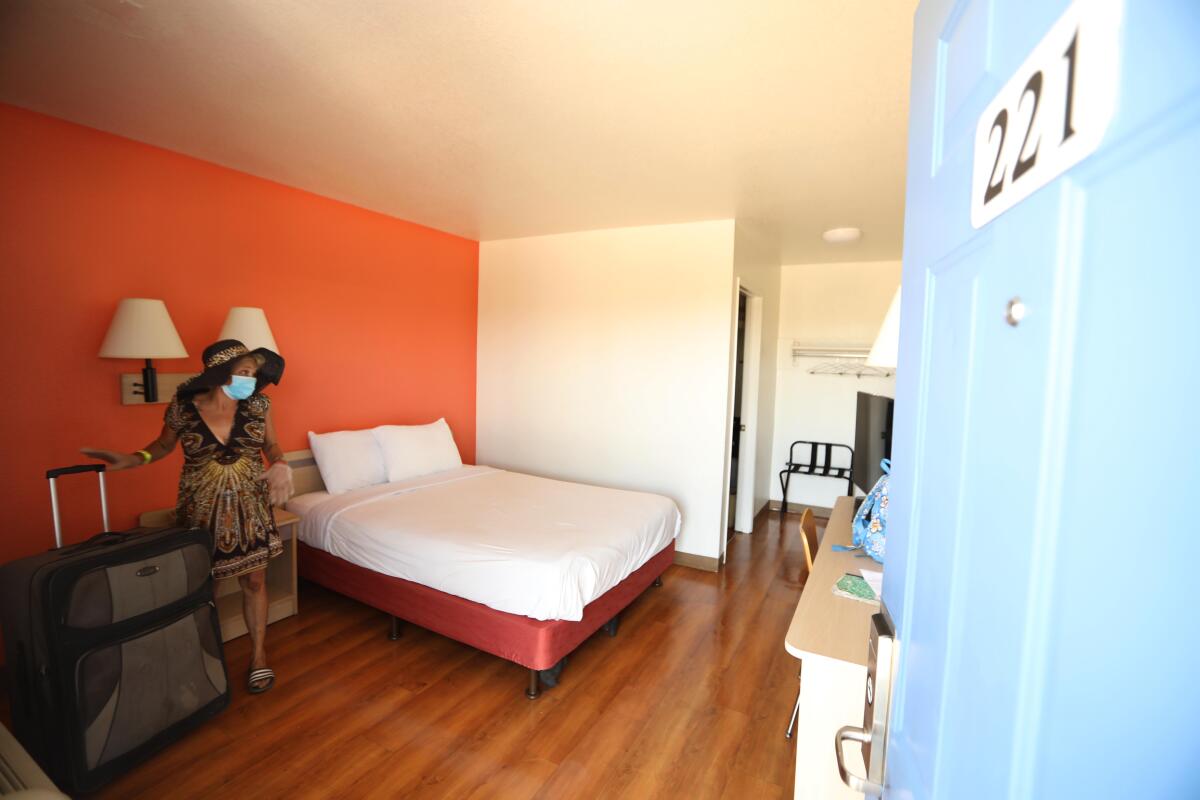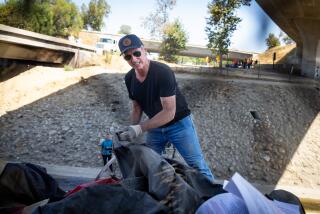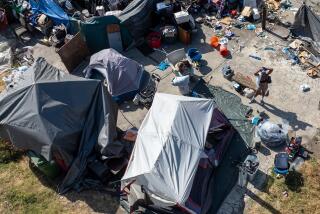Op-Ed: Learning from the pandemic about what works against homelessness

Sometimes the answer to a complex problem lies right in front of our eyes.
Faced with the COVID-19 pandemic in the spring, California was forced to find a way to get people living on the street into shelter as quickly as possible. The successful strategy it employed shows how we can combine urgency with greater resources to deal with our growing homelessness crisis in a post-pandemic world.
Back in April, Gov. Gavin Newsom launched Project Roomkey with $100 million in state funding to move people indoors and prevent what public health experts feared would be the rapid spread of COVID-19 through homeless camps. State and county negotiators teamed up to lease thousands of hotel rooms and turn them into temporary shelter.
The Federal Emergency Management Agency reimbursed local governments for 75% of the cost. The state paid 19%. Cities and counties were responsible for only 6%.
In just a few months, more than 22,000 people were housed. Roomkey motels operated in major urban centers like Los Angeles, the Bay Area and Sacramento, as well as in less populated places like Merced, Redding and Humboldt County.
Newsom last month announced an additional $62 million for Project Roomkey to keep people in hotels beyond its original Dec. 31 end date and to help fund rehousing services. With the program winding down, the state also launched Project Homekey, which combined $550 million in federal CARES Act stimulus funds with $50 million from the state general fund to create permanent supportive housing, largely in converted hotels. These funds have been awarded to 49 cities and counties all over the state and are being used to create more than 6,000 new housing units for the homeless population.
Project Roomkey was not perfect. For one, it was temporary. But it showed that given the opportunity, huge numbers of unsheltered people will choose a bed over the street. The approach also showed that the perennial debate over how to reduce homelessness — whether the answer is more money to build shelter or more power to compel governments to build shelter and people to accept it — is hollow.
The Roomkey initiative did not pick sides. It demonstrated that both money and some form of compelled urgency are needed to put thousands of people into housing quickly.
The federal and state governments gave cities and counties unprecedented financial support to get people inside. That money was combined with public health orders that prompted local officials who were worried about the potential spread of the coronavirus to act.
Technically, participation by local governments in the program was voluntary. But the state and local public health orders served the same purpose as a formal legal requirement that they provide more housing. The orders obligated cities and counties to act with more urgency. Without them, the homelessness problem would surely have been treated like business as usual.
Numerous cities and counties that previously took a passive approach to addressing homelessness participated by turning motels into temporary shelters.
To continue with this approach, we will need sustained financial commitments from the state and the Biden administration once the pandemic has ended. This is fully justified by what can only be described as an ongoing public health crisis created by homelessness.
President-elect Joe Biden’s campaign platform called for a major investment in the federal Housing Choice Voucher Program for low-income renters. This proposal alone demonstrates an interest in partnering with state and local governments on housing that has not existed for the last four years.
At the same time, we need to create a framework, similar to the coronavirus public health orders, that would provide the urgency around homelessness that the pandemic provided. For example, the state or counties could pass legislation establishing a legal right for unsheltered people to come indoors. The state could also create a requirement that all levels of government attain a reduction in unsheltered homelessness over a reasonable period of time.
The best answer might be the most obvious. Issue a public health order after the pandemic to recognize homelessness for what it is: a growing and complex physical and mental health crisis, different from COVID-19 but comparable in its impact on our most vulnerable communities.
This nation expanded access to healthcare through the Affordable Care Act. We need to think about housing and homelessness in the same way — as a national issue that local governments cannot address alone.
We constantly search for examples where someone got it right on a difficult or intractable problem. For homelessness, we do not have to look back decades or even years. The success happened this year.
Darrell Steinberg is the mayor of Sacramento and founder of the Steinberg Institute, a statewide advocacy institute for mental health policy change.
More to Read
A cure for the common opinion
Get thought-provoking perspectives with our weekly newsletter.
You may occasionally receive promotional content from the Los Angeles Times.










